Germiest Things We Touch Every Day
You wouldn't believe the germiest things we touch every day.

A study shows that bacteria, such as cold and flu viruses can survive for 18 hours on hard surfaces. Since the average adult can touch as many as 30 objects within a minute, it is important to keep those germs at bay. Everyday objects like a purse, shoes and even a steering wheel are some of the germiest things we touch every day that harbor harmful germs. Cleaning inside your home can help to protect you, but going food shopping, out to dinner or even to the doctor's office are ways to come in contact with just a few of the germiest surfaces and objects. However, having products like hand sanitizer or antibacterial wipes are ways that you can avoid or eliminate bacteria from the things around you and your own hands.
Kitchen Sink
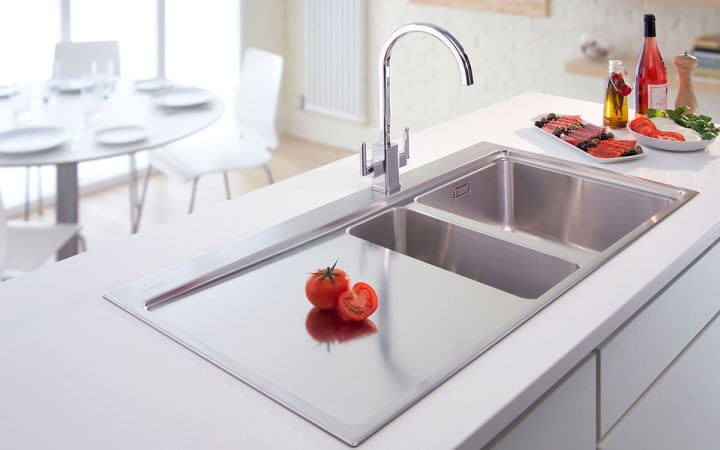
Kitchen surfaces are known for holding many of the germs and bacteria that we come into contact with. More often than not, the kitchen faucet and handle may be areas that are overlooked as a source of potentially harmful bacteria. Researchers have found that the average kitchen sink harbors about 100,000 bacteria per square centimeter. Your kitchen sink is the perfect place for germs that thrive in moist environments. Not to mention that food prep introduces E. coli and Salmonella into the equation as the leftover food bits give germs something to feast on. Using the right cleaning product is important, as well as the frequency that you disinfect the area. Lysol Kitchen Cleaner kills harmful bacteria in sinks, countertops, appliances, tables and even walls.
Dish Sponge
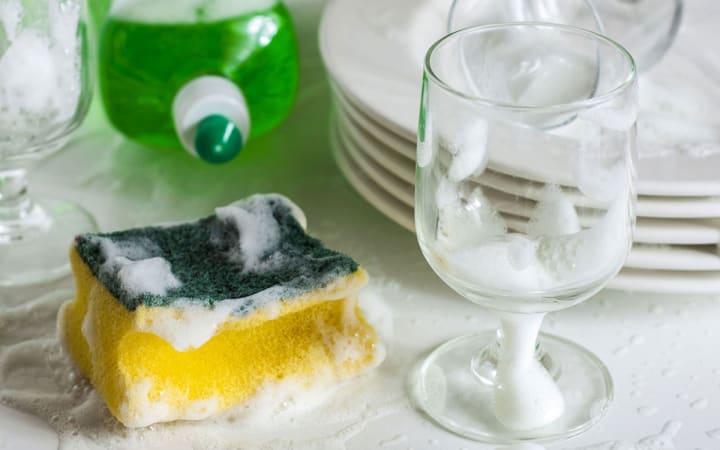
The kitchen sponge one of the germiest things we touch everyday. It is the ideal place for bacteria to flourish because of its moist environment. And while a sponge is supposed to be used to clean, wiping your counters or dishes with a dirty sponge only transfers the bacteria around. Studies show that dish rags and sponges tested positive for bacteria, MRSA, influenza, E. coli and more. It is recommended that you replace your sponges weekly, but in order to ditch the germs altogether, try Safix All Natural Scrub Sponge. It is made of Coir Fiber from coconut shells and the breathable design means no odors and long lasting use. The scrub pad is biodegradable, organic and safe to use on all surfaces from cast iron to fine china.
Bar Of Soap
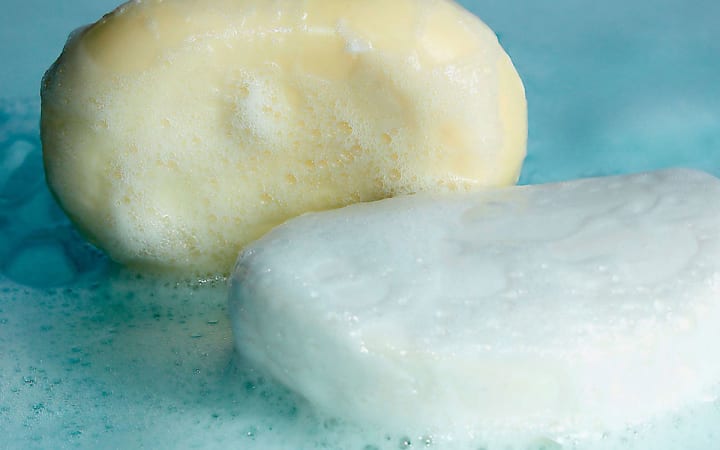
Have you ever thought about cleaning your bar of soap after you use it to clean yourself? You probably haven't but it is recommended that you do. Soap isn't a disinfecting or sanitizing product, it's a cleaning product. Since cleaners aren't intended to kill germs, they can end up collecting them instead. A solution is to use liquid soap in place of a bar of soap. Whether it's in the shower or at the kitchen counter, liquid soap can help to prevent the spread of germs. All natural products, such as Puracy Natural Hand Soap, are easy on your hands and the environment. This plant-based soap is non-toxic and fortified with vitamin E, sea salt and aloe vera. But if you do opt for a liquid hand soap in place of the bar of soap, don't forget to regularly clean the pump, or that will have to be added to the germiest things we touch every day.
Keyboard

Keyboards are often passed around from employee to employee during their time in the office. People cough, they touch their face, they sneeze; the possibilities for the transfer of germs seem almost limitless. The spaces between the keys hold germs, crumbs, etc, which makes it one of the germiest things we touch every day. And most likely, these keyboards aren't sanitized enough, if at all. And forget work, when you're passing your laptop around from person to person in your household, the transfer of germs is taking place right before your eyes. While disinfecting wipes are good from time to time, a 3M Keyboard Cleaner Kit can be used to get rid of those germs. Included is a scrubbing tool, a cleaning solution and finishing cloths. The tool scrubbing tool is designed to remove dirt from the keys and fits in the hard to reach spaces between the keys. The cleaning solution cuts through grime, grease, and fingerprints.
Steering Wheel

When it comes to your car, you probably don't think about it being one of the germiest, but some areas in the car are considered "high-touch" surfaces. While in the car, you may pick your teeth, your nose, bite your nails; and then touch the steering wheel or door handles. When you sneeze, the germs are in a contained area and lurk afterward. Getting the occasional car wash can help to clean those areas, but only you know what areas are your "high-touch" areas. Armor All Cleaning Wipes help to remove any dirt, dust or germs from the hard surfaces in your car. The effective wipes are lint free and will not leave any greasy residue on your hands or the surfaces.
Cell Phone

Your cell phone may be one of the germiest things you come into contact with. As a digitized century, people hardly ever go anywhere without their phones, even the bathroom. In fact, a study in the UK found that 1 in 6 cell phones were contaminated with fecal matter. Mix that with the surfaces it touches, the other people that touch it, the way it's handled just by yourself, and you have a recipe for big time bacteria. Throwing your phone under the sink for a quick rinse isn't an option. However, Green Tea Cucumber Wireless Wipes are the best antibacterial wipes for a germ-free phone. They safely remove dirt ad germs from you electronics without damaging them.
Purse
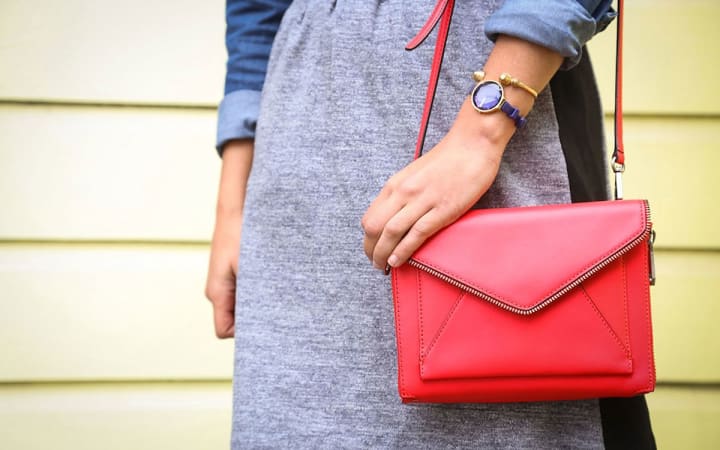
Sure the handles of your purse may be dirty from the germs that are on your hands, but think about the other parts of that purse. The bottom comes into contact with anywhere and everywhere you plop your pocketbook down. It goes into the bathroom with you. Not to mention all the stuff that you throw inside of it. Then you get home and put it on your kitchen table, your bed, and who knows where else. The spread of germs is endless. Carrying Wet Ones Antibacterial Wipes will help you to keep your purse sanitized. In addition to keeping your purse clean, these wipes are great to throw into your bag for on-the-go cleaning. Wipe your hands, car and more quickly and easily with these wipes.
Shoes

Your shoes go to all the places you do: the subway, bathroom, doctor's office. The bottom of your shoes track all kinds of dirt, germs, chewing gum, and other contaminants, making them one of the germiest things we touch every day. Then you take all these germs home and subject yourself and your family to their bacteria. Especially if you have small children in the crawling stage, they are subjected first to the bacteria and germs that are trekked through the house. You've probably been to houses where the rule to take your shoes off at the door is implemented, and there seems to be a good reason for it. Placing a shoe rack near the door that you and your family use the most often will help to enforce that same behavior in your home.
Restaurant Menus

At a restaurant, you may come in contact with a dirty fork or a glass with a water stain, but for the most part, restaurants do a good job at cleaning up areas that are sure to be full of germs. But have you thought about how many people touch the same menu as you and how infrequently they are probably sanitized? Then you transfer those germs to your utensils, glass and even the bread that you get with your meal. Using hand sanitizer after your order and the menus are removed from the table is a great way to remove the germs you have accumulated from the menu. Purell Hand Sanitizers come with a holder that make them great for traveling, so you can hook them onto diaper bags, purses, backpacks and more.
Grocery Carts

In 2007, a study confirmed that almost two-thirds of the handles of shopping carts were contaminated with fecal bacteria. Furthermore, the bacterial counts of the carts far exceeded those counts of the average public restroom. On your way into the supermarket you touch these handles then go around and touch produce and other food products with your hands. Wiping down the handle with a sanitizing wipe can help to eliminate some of those germs. Purell Sanitizing Hand Wipes are great for a quick cleaning of the shopping cart handles to avoid picking up any unwanted bacteria.
Money

There are more than 3000 different types of bacteria that can be found on a $1 bill, according to a research carried out by the New York University, making it one of the germiest things we touch every day. A total of eighty $1 bills were analyzed during the study which showed a greater concentration and types of germs as compared to previous researches that were carried out on this subject. Some of the microbes that were found on the bills included fungi, E. coli, Staphylococcus aureus and numerous other viruses and bacteria that cause skin infections, pneumonia, food poisoning and respiratory diseases.
According to research, there are more germs on a penny than a toilet seat and about 50 percent people don’t wash their hands after handling money. One psychologist named Donna Dawson says, as money is related to individual success, people find it hard to make a negative association with it. One bill, once printed, travels around from person to person for about 21-22 months before it’s retired and transfers a lot of germs from one person to another on its way.
Cutting Boards

According to a research carried out by The University of Arizona, there are 200 times more germs on a cutting board as compared to a toilet seat. A lot of fecal bacteria originate from the cutting of different types of meat on the board. Vegetarians are also not safe because a lot of different types of pathogens can be transferred from the fruits and vegetables during the cutting process. Various types of bacteria that are found on a cutting board include Salmonella, Listeria and Escherichia coli. The more grooves the cutting board gets on its surface, the more it is likely to sustain moisture which increases the bacterial growth on the boards’ surface. Wooden boards are found more effective as compared to the plastic ones to restrain bacterial growth.
Doorknobs

Whether these are the ones at your home, office or any other public place, door knobs carry a lot of different types of highly populated germ communities that you interact with on daily basis. Some of the types of Staphylococcus which are found on door knobs can survive in dry conditions and can cause skin infections and food poisoning. Door knobs also carry Streptococcus which can cause meningitis, pneumonia, and strep throat which gives you a sore throat and fever. Some other bacterial infections and diseases that can be contracted from the germiest door knobs include gastroenteritis, cramps, urinary tract infections, diarrhea, mastitis, dysentery and fever which are caused by E. coli, Salmonella and Campylobacter found on door knobs.
Hand Shakes, Fist Bumps, and High Fives

When you shake hands with someone, there’s a zero percent chance to not contract any germs if the other person’s hand is not clean. Dr. Dave Whitworth from Aberystwyth University in Wales, along one of his PhD students, carried out a research to figure out the transfer rate of germs by various greeting methods, like handshakes, fist bumps, and high fives. According to the study, only 10 percent of germs are transferred by fist bumps, and 50 percent by high fives, as compared to handshakes because of the smaller surface area of hands that come in contact during these interactions. Moreover, according to statistics, one person annually shakes hands with 11 women and six men who fail to wash their hands after masturbation. Switching to fist bumps or keeping a hand sanitizer in your pocket or purse seems logical after reading this.
Faucet
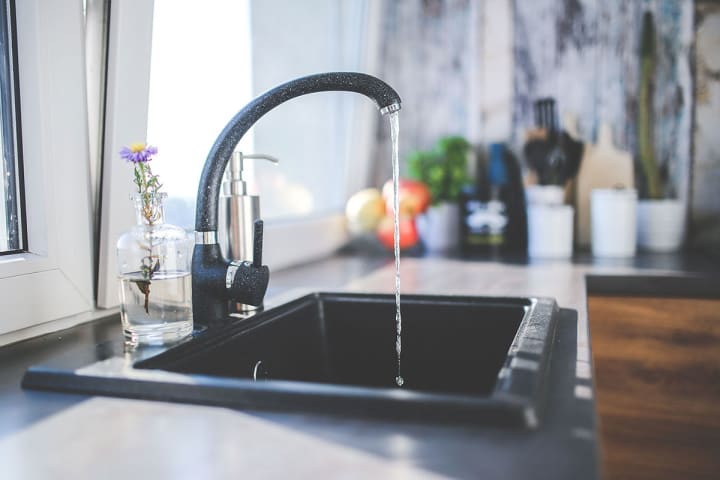
The wet surface of faucets is one of the ideal conditions for bacterial and viral growth. According to a research conducted by Hygiene Council, there are twice as many germs on a faucet or fountain as compared to a toilet seat, and there are alarmingly 15 percent more bacteria found on kitchen faucets as compared to the ones used in the toilet. The research showed that 14 percent of the faucets contained E. coli and 8 percent contained Staphylococcus aureus which causes pneumonia. Campylobacter and Salmonella, which cause various diseases and infections, were also found along with pseudomonas which gives the clothes a pungent smell.
Remote Control

Television remotes are used by everyone in a house, and even though they are used multiple times in a day, they are not noticed as a hotspot as one of the germiest things we touch every day. They are usually found on the floors, between the couch, used by people coming back home from outside, bathroom, kitchen, by someone whose home sick for the day and are also used while watching television and eating simultaneously. There is always a sticky layer on their surface which tells their story and according to a research carried out by the University of Virginia, the remote control surfaces are amongst the germiest things found in a household. Half of the remotes that were studied during the research contained cold viruses. Active germs that are present on a remote control can stay alive for 24 hours, and can be transferred with a click of a button.
Electric Switches
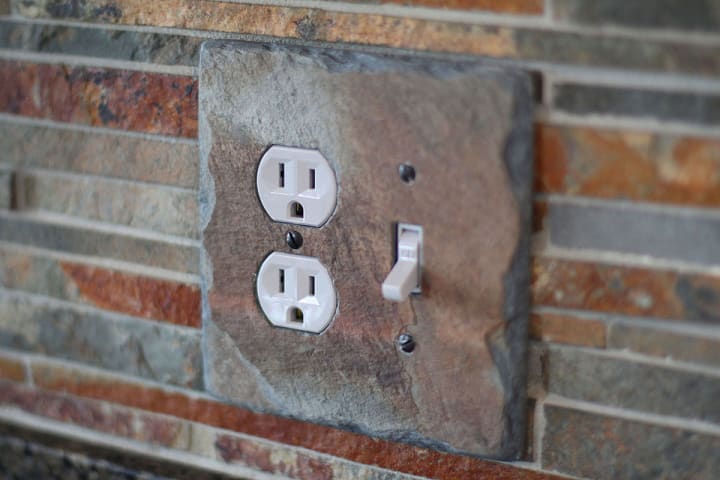
We come in contact with electric switches, used for various purposes more than we think about, on a daily basis. Germs are transferred onto the switch when are person touches it and are spread around when another person comes in contact with them. According to a research, carried out by an undergraduate student Katie Kirsch at the University of Houston, there are 122.7 CFU of aerobic bacteria and a ridiculous amount of 111.1 CFU fecal bacteria present on the light switches of a hotel room. CFU (cubic centimeter squared) is a colony forming unit used in microbiology to estimate the number of bacteria or other microbes in a test sample. Maybe the number of germs could be a lot less for the electric switches used at homes but it still raise concern.
Toothbrush
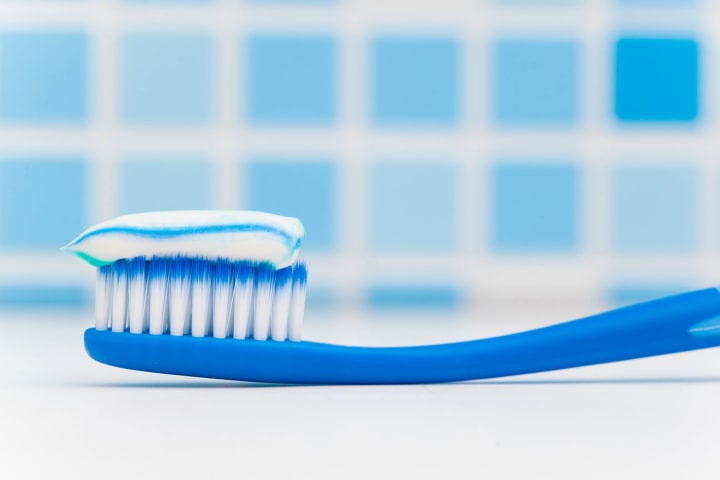
We all brush our teeth twice a day except for the ones who like the color yellow. Once we’re done, we rinse it and leave the damp toothbrush with a nice wet environment, ideal for bacterial and fungal growth. The bacterial colony that multiplies on every fiber of your toothbrush, not only comes from your mouth, but from the toilet, too. Research conducted by Charles P. Gerba, a PhD at the University of Arizona, concluded that once the toilet is flushed, little water droplets containing bacteria and viruses are sprayed across the bathroom which can float around in the air for about two hours before landing on a surface. These various germs can easily approach a toothbrush between 3' and 6' from the toilet during their flight.
ATM Machines
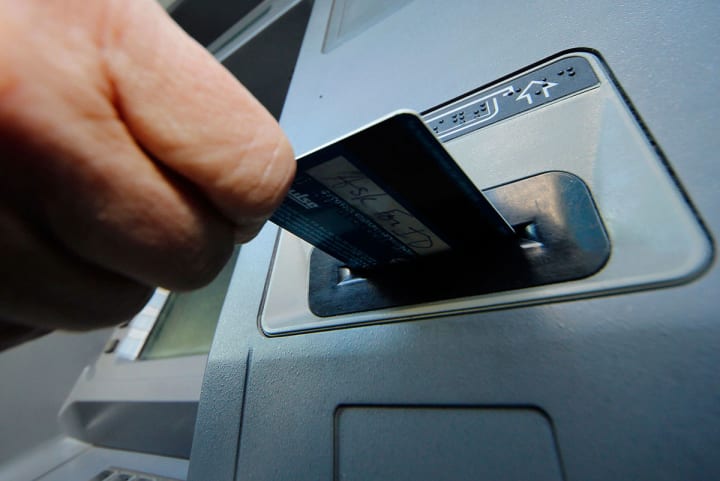
Research conducted by scientists at BioCote revealed that the ATM machines are covered with the same kind of germs that are found in public toilets. The researchers took swabs from both numeric keypads on ATMs and toilet seats of public bathrooms, left the samples to grow overnight to only find out that both contained same microbes. Dr. Richard Hastings, a researcher and microbiologist from BioCote stated “We were surprised by our results because the ATM machines were shown to be heavily contaminated with bacteria; to the same level as nearby public toilets. In addition, the bacteria we detected on ATMs were similar to those from the toilet, which are well known as causes of common human illnesses.”
Towels
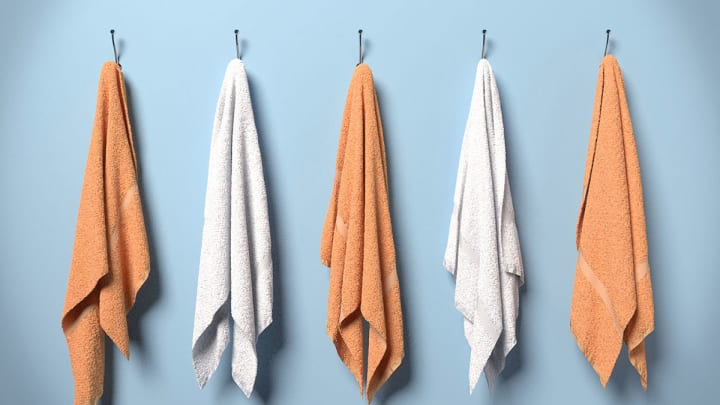
Research carried out at the University of Arizona indicated that towels can easily be the germiest thing at your home because they are used more than once a day in kitchens and washrooms, and they can retain moisture for a long period of time, which helps breeding bacteria. According to the research, Coliform bacteria were found in 89 percent of kitchen towels which cause food poisoning and diarrhea. E. coli was found in 25.6 percent of towels. The researcher, Charles P. Gerba said “You can cross contaminate food when you wipe your hands on a towel and then contaminate other foods or bring your hands to your mouth and infect yourself.” Another study that was carried out in hundreds of houses across the US indicates that 7 percent of kitchen towels are contaminated with MRSA, responsible for causing serious skin infections.
About the Creator
Longevity Staff
In all modes and aspects, a group of shape shifters committed to spreading the gospel of health and wellness.






Comments
There are no comments for this story
Be the first to respond and start the conversation.